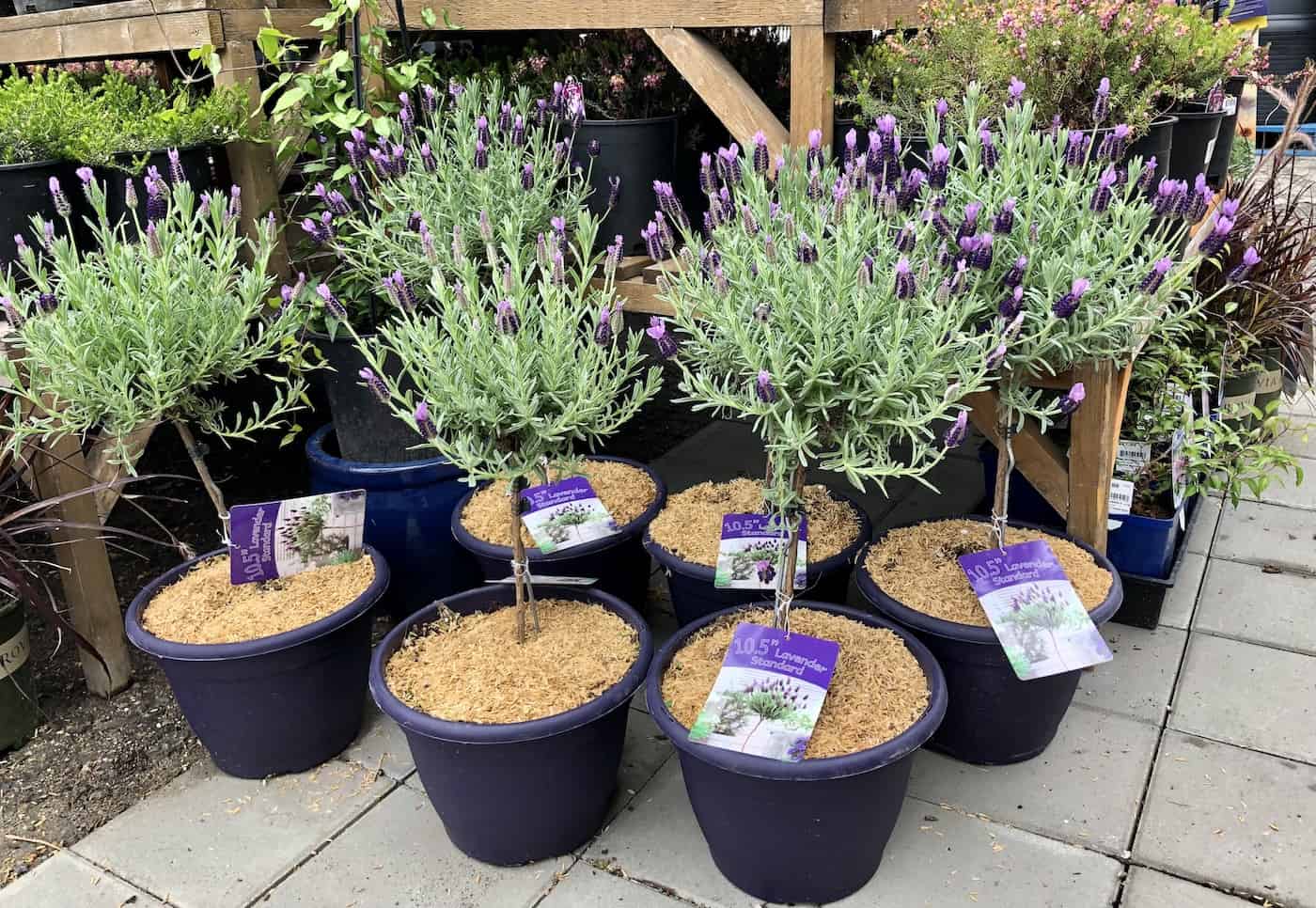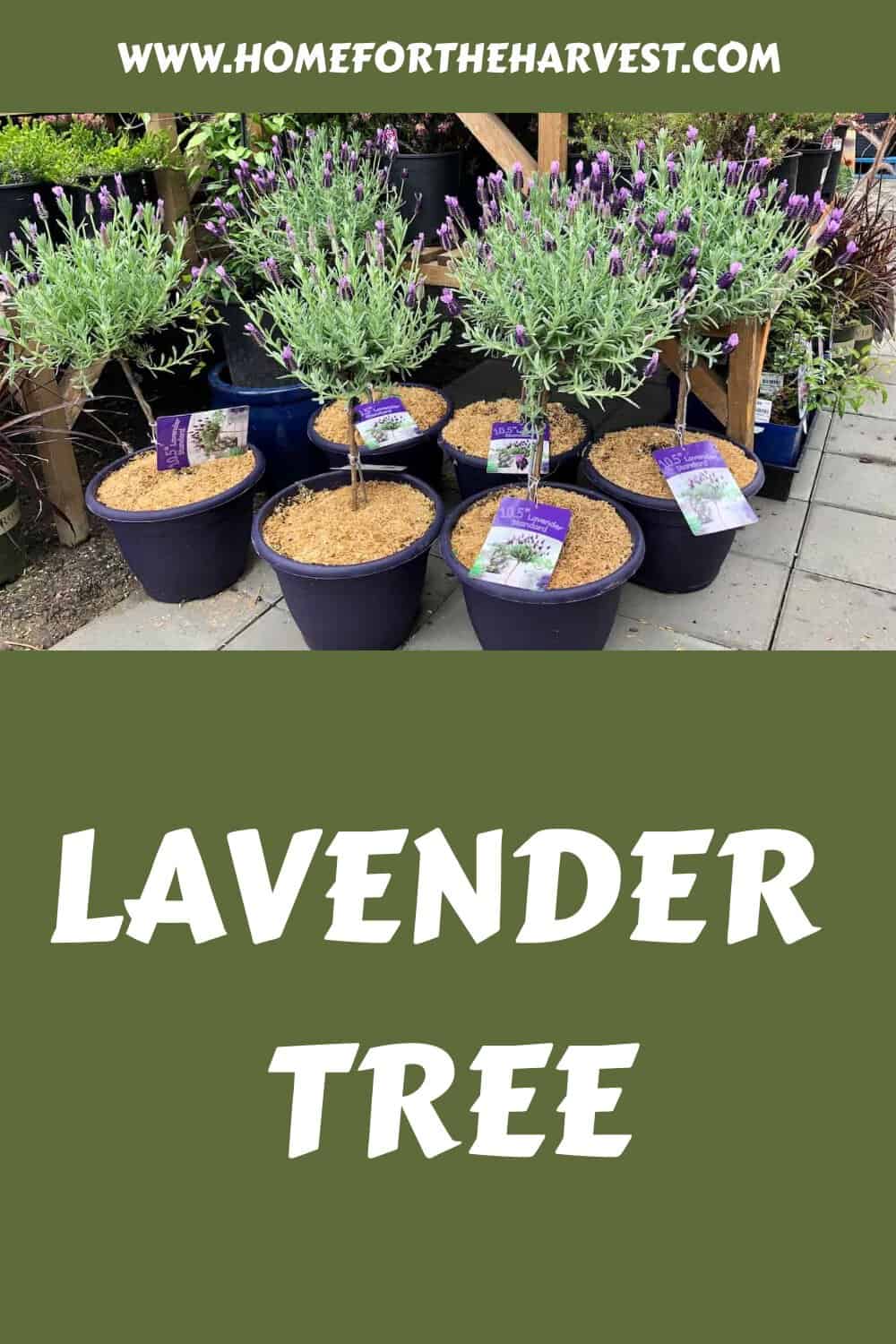If you’re looking for an easy-to-maintain, fragrant, vibrant plant with beautiful purple flowers to add to your home, look no further than a lavender tree! Lavender trees are lavender plants cut into the shape of a tree through the process of lavender topiary tree. You can put these fragrant trees in your home or garden for a pop of color! Keep reading to uncover the basics of lavender trees, basic lavender tree plant care, and overwintering lavender trees.
Lavender tree basics
Through the process of lavender topiary, a regular lavender plant is shaped into a tree. Although you can keep your lavender plants as is, the classic structured shape of a standard lavender topiary gives your garden or home an elegant touch.
Lavender trees are most commonly created from varieties of Spanish lavender due to the ornamental flowers with the distinctive “rabbit ears” petals at the top of the flower spikes. English lavender is another type of lavender that is sometimes formed into a tree shape.
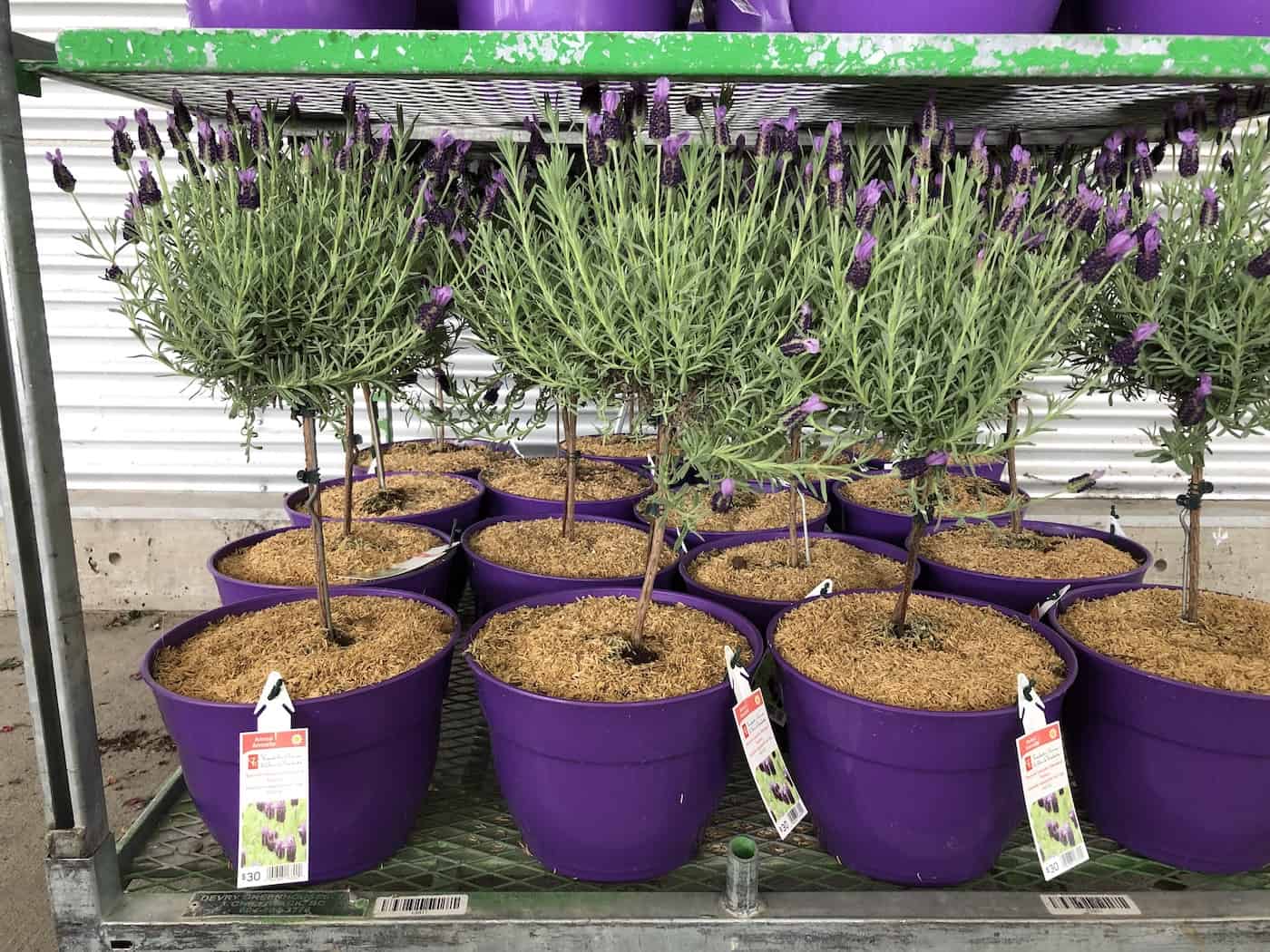
Buying lavender trees
Lavender trees are most commonly sold in garden centers in the spring and summer but might be available to order year-round from specialty nurseries.
How to care for a potted lavender plant
Re-pot your new lavender tree into a pot that’s 1″-2″ wider than the plastic pot it likely arrived in. Don’t try to go too large with the new pot. A pot that is too large increases the likelihood of damp soil because the roots have not taken up enough space. If too much of the soil is damp, it can cause root rot and kill your lavender tree. You want a pot that is only an inch or two larger than the root ball to allow the roots to take up most of the soil space, keeping the plant drier.
Lavender trees thrive in well-draining soil. Use a lightweight potting mix made with either peat moss or coco coir mixed with some perlite or pumice.
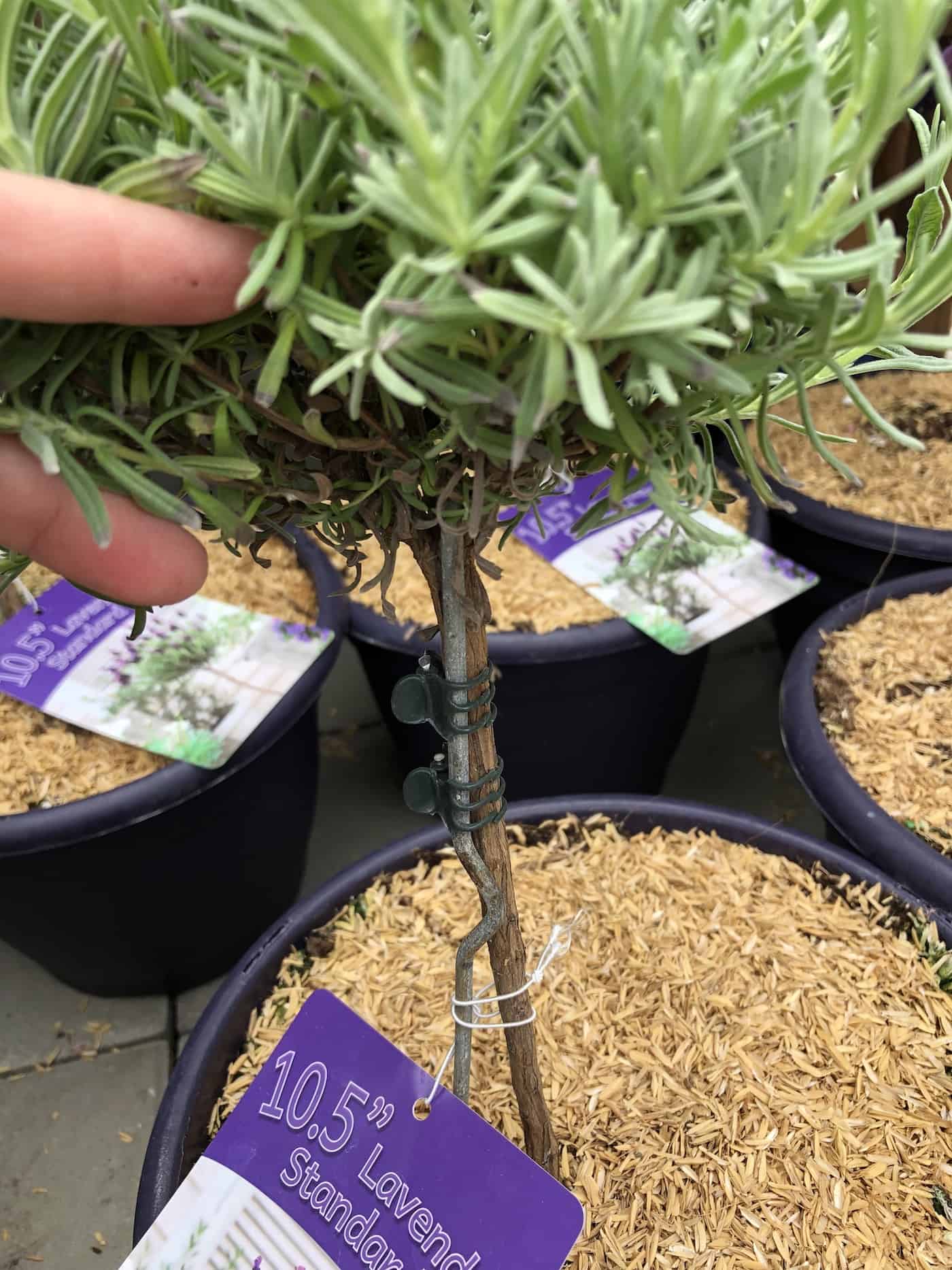
How to turn a lavender plant into a tree
You can buy a lavender tree from a garden store or make one yourself. If you’re up for the challenge, using a lavender topiary tree to shape your lavender plant into a tree is gratifying. Creating a lavender tree isn’t that difficult; even the most novice gardeners can do it.
Start with a young lavender plant. Choose the plant’s most central, strong-looking stem to be the future trunk. Remove the other stems back to the base so you have only a single stem. Add a small plant stake to support the central stem. Remove the leaves from the bottom half of the stem. Then water and care for a lavender plant normally for the following months as it adjusts to its new shape.
As time goes on, remove any additional stems that sprout on the base. As the central stem gets taller, pinch it to encourage branching. The central stem will eventually become woody, although these plants are generally staked for several years as the central stalk develops strength. Don’t prune the side branches on the top ball of the tree until they grow larger than the intended radius of the topiary ball.
How to transplant a lavender tree
Transplanting a lavender tree into the soil is essential if you want it in your outdoor garden. However, transferring plants from pots to soil can sometimes result in transplant shock. Transplant shock symptoms include wilting, falling leaves, dying branches, sudden falling of flowers or fruit, or the plant may die entirely.
To prevent transplant shock, transplant your lavender tree in the early spring, if possible, once the soil starts to warm up after winter. You can transplant your tree into the soil at other times of the year, but be very careful to water it before the soil becomes dry, as the roots will not have grown into the surrounding soil.
To transplant your lavender tree successfully, make sure the soil is well-draining to prevent roots from rotting. If your soil isn’t well-draining, add some rocks, sand, or grit to break up the density of the soil. You also need to ensure the soil is at 6.5-7.5 pH. This pH level range is neither too acidic nor too basic, making it prime for transplanting your lavender tree.
Water your lavender tree frequently at first for the first year to allow the roots to develop into the soil. Take care to observe that soil is not ponding on the surface after watering, as this indicates poorly drained soil (in which lavender trees do not thrive). The more your roots develop, the longer your lavender tree will likely live.
Next, make sure your lavender tree is in a spot that receives plenty of sunlight, as this will promote healthy plant growth. Lastly, place your lavender tree a couple of feet away from other plants to ensure the tree receives unhindered sunlight and adequate airflow.
How to overwinter lavender trees indoors
You can overwinter your lavender trees outdoors if you’re located in hardiness zones five and warmer. However, if you live in hardiness zones four and below, you need to overwinter your lavender trees indoors. To overwinter your lavender tree indoors, place your lavender trees in pots that are only around an inch larger than the root ball. Also, ensure the soil drains out excess water easily from the bottom of the planter pot.
Make sure to water less while you’re overwintering your lavender tree, as the soil does not dry out as quickly in the winter—only water when the soil feels dry on the top inch. Try not to let the entire pot dry out, as this can stress the plant. Despite being placed indoors, you also want to ensure your lavender trees still receive plenty of sunlight. Temperature is another factor that can affect overwintering. For instance, the temperature needs to be at least 40 degrees Fahrenheit at night and no more than 65 degrees Fahrenheit during the day.
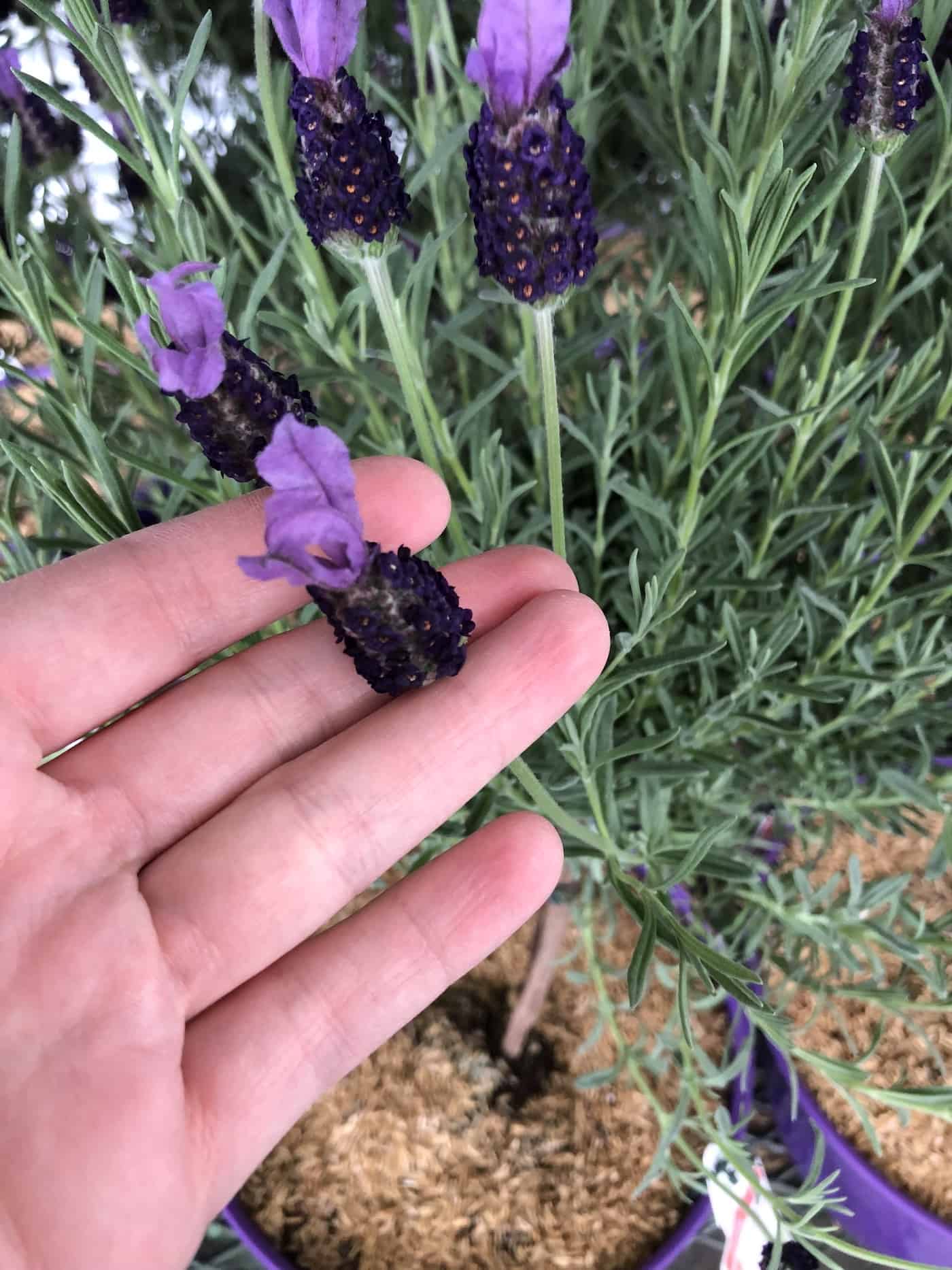
How to prune a lavender tree
Pruning your lavender tree is crucial to maintaining its ball-like shape. Annual pruning is generally done in the spring. Prune lavender trees by cutting back each branch by about 1/3 of its length to create the ball shape at the top of the lavender tree. Light trimming and deadheading of flowers can occur throughout the season to keep the plant shapely.


